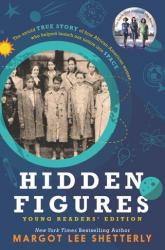Hidden Figures: The American Dream and the Untold Story of the Black Women Mathematicians Who Helped Win the Space Race
By Margot Lee Shetterly

My last duty station in the Navy was at Fort Monroe in Hampton, Virginia. I was delighted to find the book Hidden Figures: The American Dream and the Untold Story of the Black Women Mathematicians Who Helped Win the Space Race because it brought back memories of my time there and enriched my understanding of the history of Hampton and the vital roles played there by Black women. This is the book on which the film of the same name is loosely based (both appeared in 2016).
Hampton, Virginia, is home to Hampton University and Langley Research Center (LRC). Founded in 1917 to advance airplanes, LRC has been a major part of the National Aeronautics and Space Administration (NASA) since the 1950s. During the Jim Crow era, a job at LRC provided stable employment and professional status for Blacks. In the 1930s and 1940s, Black women worked as human “computers” at LRC, manually computing the many difficult calculations that allowed engineers to improve the flight characteristics and safety of aircraft. World War II enhanced the importance of their work by orders of magnitude. Shetterly tells the many stories of people she and her parents knew—neighbors, friends, and church members—whose diligent work improved warplanes and advanced the war effort.
During this time, Virginia was segregated and reeked of white supremacy. Dorothy Vaughan, college educated and in search of meaningful work, arrived at LRC to find a segregated facility, poor housing conditions, and public transportation systems that discriminated against Blacks. She and her colleagues endured many discriminatory indignities at this federal facility. For example, a sign on a cafeteria table read “Colored Computers.” Miriam Mann, taking a stand, stashed the sign in her purse. It reappeared the next day. She took that one as well; it reappeared. This dance continued until finally one day the sign disappeared forever. Score one for perseverance.
The computers did work that was vital to the war effort, improving the P-51 Mustang fighter and helping the famed Tuskegee Airmen overcome their adversaries. The work with airplanes continued after the war to include transitioning jet aircraft into the military, breaking the sound barrier in 1947, and refining the warplanes of the Korean War.
When the work of computing was transferred to electronic computers, the hidden figures like Dorothy Vaughan remained, leading the transition. Many other Black women joined them. They were promoted from mathematician to engineer and ran supersonic wind tunnels. They wrote papers and manuals still in use today. When the era of human space flight arrived, they were ready, calculating how orbit was achieved and assuring the successful descent to a precise location for recovery. John Glenn would trust the electronic computers only after Katherine Johnson had rechecked the figures to ensure they were correct. When Americans landed on the moon and returned successfully, a large measure of this success was due to the work of these unsung Black women.
—Thad Zajdowicz, Co-chair, Healthcare Committee